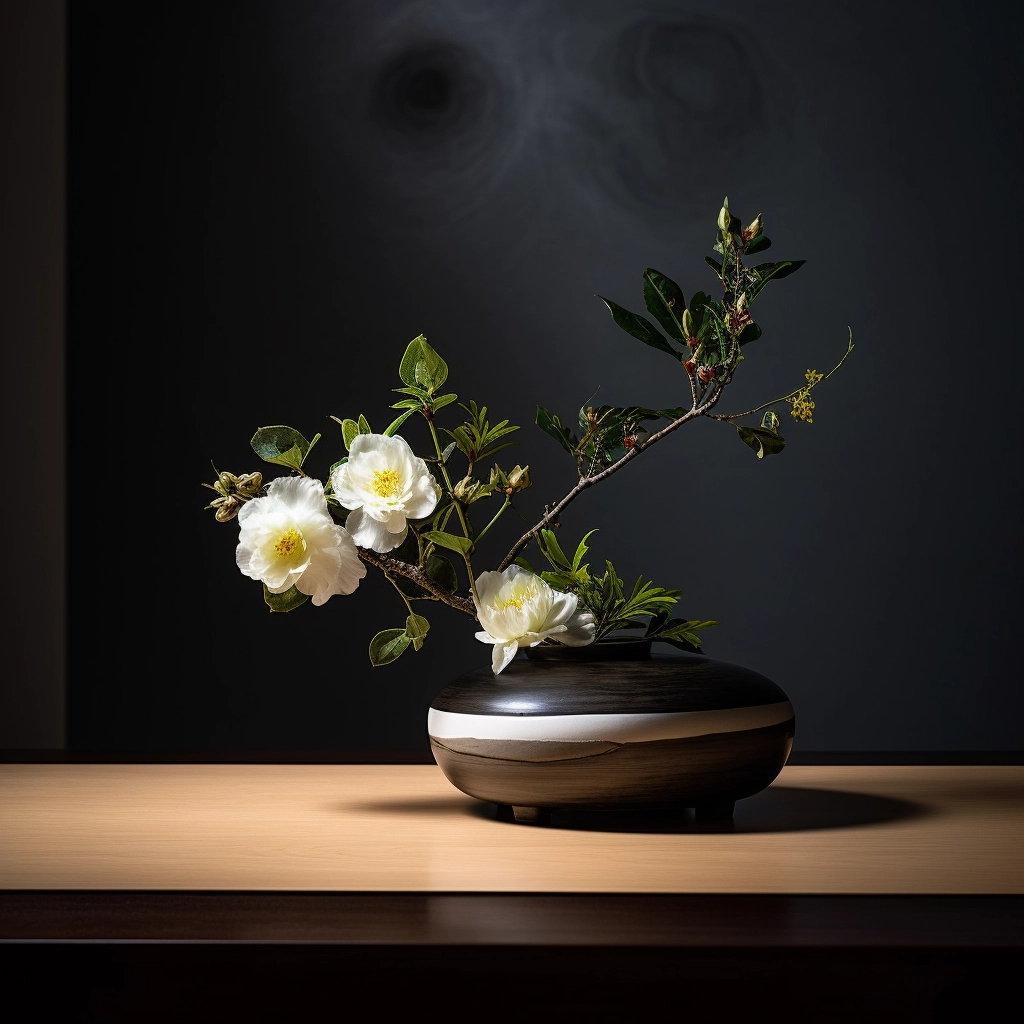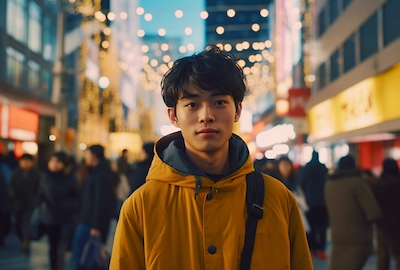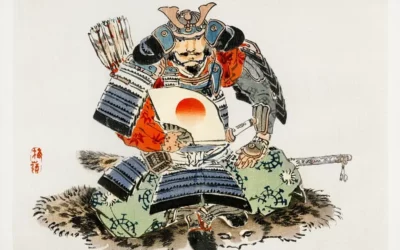I. Introduction
From the serenity of Zen gardens to the burst of cherry blossoms in spring, the Japanese have a profound connection with nature that is deeply rooted in their culture. Among Japan’s many artistic traditions, one stands out for its delicate beauty and meditative tranquillity: Ikebana, the art of Japanese flower arranging.
Ikebana is more than just an arrangement of flowers. It’s a harmonious blend of nature, aesthetics, and philosophy, a silent dialogue between humans and the natural world. The beauty of Ikebana lies not just in its visual appeal, but in the thoughtful process of its creation.
As one of the most distinguished forms of Japanese art, Ikebana holds a special place in the hearts of the Japanese people. It symbolises the country’s deep respect for nature and its propensity to find beauty in simplicity and subtlety. It embodies the spirit of ‘Mono no Aware,’ a Japanese concept that appreciates the fleeting beauty of transient things.
This guide aims to walk you through the world of Ikebana – from its Buddhist origins to its contemporary interpretations, and even guide you to create your own Ikebana arrangement. Whether you’re new to Japanese art or a seasoned enthusiast, we hope this guide will illuminate the serene beauty and profound philosophy behind Ikebana.
II. What is Ikebana?
Ikebana, directly translating to “making flowers alive,” is a unique form of art that has blossomed in Japan over centuries. But what exactly is Ikebana? At its most basic, Ikebana is the Japanese art of flower arrangement. But it’s not just about arranging flowers in a vase. It’s a disciplined art form steeped in the philosophy of developing a closeness with nature and encouraging the arranger to find beauty in line, form, and color.
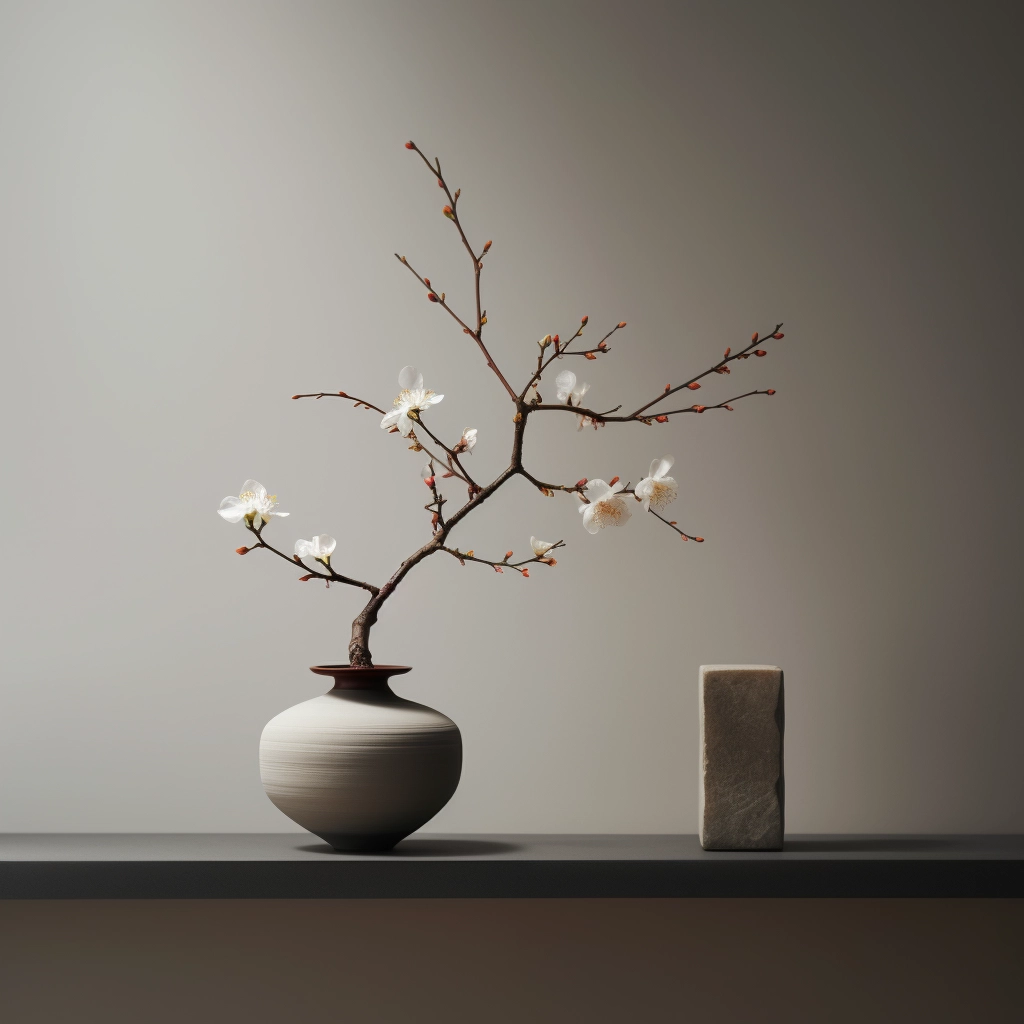
The meaning of Ikebana goes beyond the surface. Each flower, stem, and piece of foliage placed in an Ikebana arrangement is symbolic, its position relating to the other elements and to the overall form. The arrangement isn’t just about the blossoms; stems and leaves play critical roles too. Their shapes, lines, and the spaces between them are as much a part of the composition as the flowers themselves.
A fundamental principle in Ikebana is the concept of “Ma” or “space.” Unlike many Western floral arrangements that focus on gathering an abundance of flowers into a compact display, Ikebana values the space between the elements as much as the elements themselves. The space, or ‘Ma’, creates a balance and harmonious rhythm, allowing each piece to stand out while also working together as a whole.
Ikebana is also deeply rooted in Buddhist philosophy. It evolved from the Buddhist ritual of offering flowers to the spirits of the deceased, and this spiritual aspect still permeates the practice today. Each arrangement is a meditation, an exercise in living in the present and fully appreciating the beauty of nature in its transient, ever-changing state.
In essence, Ikebana is a journey, a dance between humans and nature. It’s about creating harmony, respect, purity, and tranquillity, not just in the arrangement, but within the self. It’s a practice of mindfulness, of seeing the beauty in every moment and every flower, and of expressing these feelings through the art of flower arranging.
III. The History of Ikebana
The roots of Ikebana are as deep and intricate as the arrangements it produces. The art of Ikebana wasn’t always as we know it today. Its journey began over 600 years ago, evolving from a simple act of placing flowers for religious rituals into a sophisticated form of artistic expression.
Ikebana originated in the 6th century with the introduction of Buddhism to Japan from China and Korea. Buddhist monks initially practised the art of flower arranging, or “Kuge” as a ritual offering to Buddha. These arrangements, made in honour of the Buddha, were characterised by their simplicity, a trait that still defines Ikebana today.
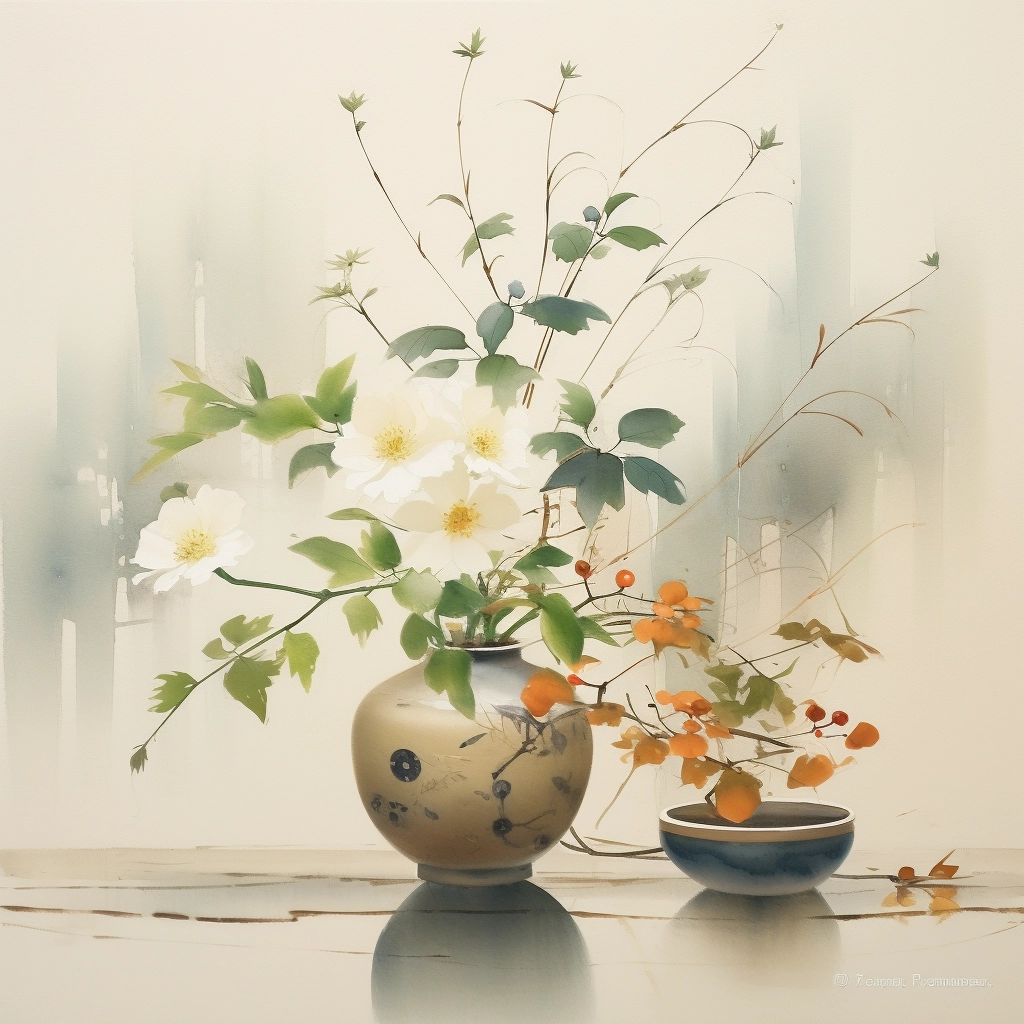
The practice of flower arranging gradually moved from the temples to the imperial court, where it was adopted by the nobility. By the 15th century, Ikebana started to develop as a distinct and recognized form of art in Japan. It was during this period that Ikebana began to incorporate aesthetic principles, transforming from a religious offering into a form of artistic expression.
The Muromachi period (1336 to 1573) was a turning point in the history of Ikebana. The art form gained philosophical depth during this time, with the influence of Zen Buddhism becoming more pronounced. Ikebana was no longer just about creating beauty; it was a path to spiritual enlightenment, a way to understand the world and our place within it.
Over time, various schools of Ikebana emerged, each with its unique style and interpretation of the art form. Despite their differences, all schools of Ikebana share a common goal: to create a harmonious composition that highlights the beauty of each element and reveals the arranger’s inner feelings.
Today, Ikebana is a respected and widely practised art form, not just in Japan but across the world. It stands as a testament to Japan’s enduring appreciation for nature and beauty, and its ability to find tranquillity and meaning in simplicity.
IV. The Process of Ikebana
An Ikebana arrangement is not merely an assembly of flowers. It is a thoughtful and meditative process where each step holds significance.
Creating an Ikebana arrangement starts with choosing the right materials. More than just flowers, an Ikebana arrangement can include branches, leaves, grasses, and even fruits or seeds. Each element is selected for its form, color, and the emotion it evokes.
The next step is to prepare the materials. Leaves may be removed or trimmed, and stems are often cut at an angle. This process is not just functional; it’s a way of connecting with the materials, understanding their characteristics, and appreciating their beauty.
Then comes the actual arranging. Ikebana arrangements are characterized by their asymmetry and use of empty space. The main stem, or “Shin,” represents heaven and is the tallest. The secondary stem, or “Soe,” symbolizes humans and is two-thirds the height of the Shin. The tertiary stem, or “Tai,” represents the earth and is two-thirds the height of the Soe. These three main elements are arranged at specific angles in the vase, creating a sense of balance and harmony.
But Ikebana is not just about adhering to rules. It’s also about expressing emotions and capturing a moment in time. The arranger is encouraged to think about the source of the materials, the season, and their personal feelings. The end result is a piece that is not just beautiful, but also meaningful and evocative.
Finally, an Ikebana arrangement is meant to be viewed from all sides. Each angle offers a different perspective and reveals different aspects of the arrangement, just like how life can look different from different perspectives.
The process of Ikebana is a journey. It’s about being in the moment, finding beauty in the imperfections, and creating a dialogue with nature. It’s a form of mindfulness, a meditation, and a way to express one’s feelings.
V. How to Get Started with Ikebana
Venturing into the world of Ikebana can be a profoundly rewarding experience. However, like any art form, it may seem daunting at first. But don’t worry, getting started with Ikebana doesn’t require you to be an expert. You just need to be willing to connect with nature and express yourself through it. Here are some steps to guide you on your journey.
- Step 1 – Gathering Your Materials: Start by selecting your plant materials. Remember, Ikebana is not just about flowers. Branches, leaves, and grasses can also make stunning arrangements. When choosing your materials, consider their form, color, and how they make you feel. You can also choose them based on the season or a theme that resonates with you.
- Step 2 – Choose the Right Container: The vase or container is an integral part of an Ikebana arrangement. It should harmonize with the materials and not overshadow them. Traditional Japanese Ikebana vases are often used, but don’t limit yourself. Any container can be used as long as it complements your arrangement.
- Step 3 – Arranging the Elements: Start with the main stem, or Shin. This should be the tallest element and set at a certain angle. The secondary stem (Soe) and tertiary stem (Tai) follow, each shorter than the last. Remember to leave space and create asymmetry for a balanced composition. Be patient with yourself and don’t be afraid to experiment.
- Step 4 – Mindful Practice: Remember, Ikebana is not just about creating an arrangement; it’s a form of meditation. Take your time, be present in the moment, and enjoy the process.
- Step 5 – Join a Class or Workshop: If you want to delve deeper into Ikebana, consider joining a class or workshop. Learning from an experienced instructor can provide valuable insights and help you refine your skills.
Starting your journey into Ikebana might seem like a big step, but remember, every expert was once a beginner. So, don’t be afraid to start. With patience and practice, you’ll soon be creating your own Ikebana arrangements, connecting with nature, and expressing your inner self in ways you never imagined.
VI. The Impact and Influence of Ikebana Beyond Japan
Ikebana, once a uniquely Japanese art form, has crossed borders and captured the imagination of flower lovers worldwide. Its minimalist approach and philosophical grounding offer a fresh perspective to floral arrangements, making it a popular subject of study and appreciation globally.
The worldwide interest in Ikebana can largely be attributed to its deep-seated roots in mindfulness and the meditative process involved in creating an arrangement. It serves as a soothing escape from the fast-paced modern lifestyle, allowing individuals to slow down, focus on the present, and find beauty in simplicity.
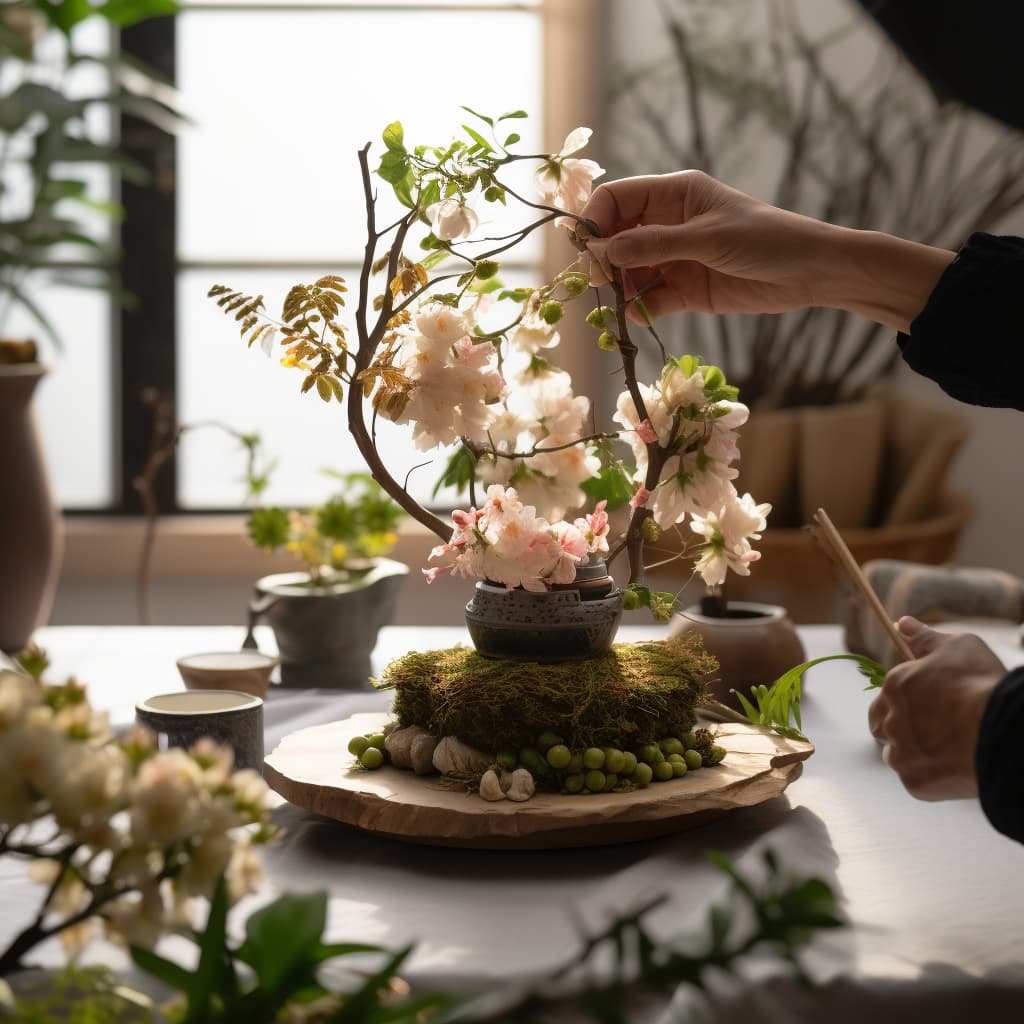
Ikebana’s influence has permeated various fields outside of Japan. It has found its way into contemporary floral design, influencing a generation of florists who appreciate the balance, harmony, and the ‘less is more’ philosophy it embodies. Its aesthetics have also influenced visual arts, interior design, and even architecture, with the principles of balance, space, and asymmetry being reflected in various design elements.
Moreover, Ikebana has also made a significant cultural impact. It has served as a bridge between Japan and the world, allowing people to engage with and appreciate Japanese culture and values. Ikebana societies and clubs have been established in various countries, enabling enthusiasts to learn, practice, and promote this art form.
Additionally, Ikebana has been utilized as a form of therapeutic activity. The process of creating an Ikebana arrangement – choosing the materials, cutting and shaping them, and arranging them in a vase – has been found to have therapeutic benefits, helping to reduce stress and promote mental well-being.
In conclusion, Ikebana, with its unique blend of art, nature, and mindfulness, has transcended its origins and evolved into a global phenomenon, touching lives and inspiring creativity around the world.
VII. Conclusion: Experiencing the Art of Ikebana
The art of Ikebana is more than just arranging flowers. It’s a journey into the heart of Japanese culture, a mindful practice that cultivates appreciation for the beauty of nature and the impermanence of life. Through this seemingly simple act of arranging flowers, stems, and leaves, we can find a moment of tranquility, a space for self-expression, and a unique way to connect with nature.
While the traditions and techniques of Ikebana have been preserved and passed down through generations in Japan, its appeal has transcended borders. Today, people worldwide are discovering and embracing Ikebana, drawn in by its meditative process, minimalist aesthetics, and the profound philosophy it embodies.
Whether you’re an art enthusiast, a lover of flowers, or someone seeking a new form of mindfulness practice, Ikebana has something to offer. It invites us to slow down, pay attention to the details, and find beauty in simplicity. And in doing so, it teaches us valuable lessons about life, balance, and harmony.
So, why not give Ikebana a try? You don’t need to be a master to start. All you need is a few flowers, a vase, and an open mind. Who knows? You might just discover a new passion and a deeper connection with the world around you.
With that, we invite you to embark on your own journey into the world of Ikebana. Don’t just observe—experience it. Let the flowers, stems, and leaves be your canvas, and let your heart guide you in arranging them. There’s a world of beauty waiting to be discovered, one arrangement at a time.

